This series contains 18 animated historical maps. For a preview, please consult the map below:
▶ The Middle East at the Beginning of the 20th Century - Introduction
SubscribeThe Middle East since the beginning of the 20th century
Constructed from the ruins of the Ottoman Empire after the first World War, the current map of contemporary Arab states in the Middle East resulted from the Great Game played out by the European powers during the 19th century. Victim of international ambitions, but unable to define objectives for its future, the Middle East became vulnerable to conflicts due to its internal difficulties.
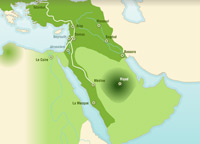
The Middle East at the Beginning of the 20th Century - Introduction
Complete video
The Arab Middle East was caught between Ottoman domination and interference from European powers.
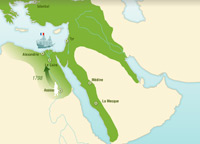
Egypt after Napoleon’s Expedition
Video extract
Following Napoleon’s expedition to Egypt, the country’s leaders sought to introduce modernization and emancipation from Istanbul but, faced with financial difficulties, gradually came under British domination.
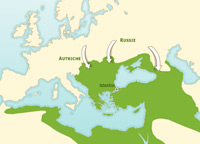
The Ottoman Empire: Expansion and Retreat
Video extract
This map illustrates the major phases of the Ottoman Empire’s territorial expansion until it was dismantled in 1918-2000.
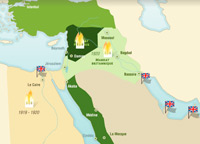
The First World War and the Treaties, 1914-1920
Video extract
The First World War led to the demise of the Ottoman Empire. Despite promises from the European powers, Arab nationalists did not succeed in creating an all-encompassing Arab kingdom.
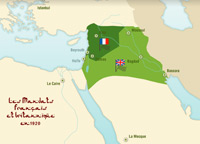
The Sykes-Picot Agreement
Video extract
Negotiations between France and Great Britain led to the definition of their zones of influence in the Middle East.
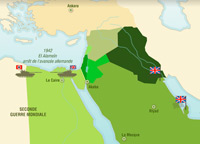
France and Great Britain in the Middle East 1920-1945
Video extract
The League of Nations gave England and France were given Mandates for the administration of the Middle East. Their attempts to establish a permanent role in the region were thwarted by Arab nationalism, which, though poorly defined, was nonetheless very active.
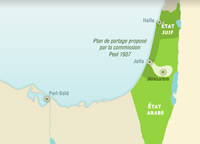
British Mandate for Palestine
Video extract
Under the British Mandate for Palestine, relations between Arabs and Jews deteriorated.
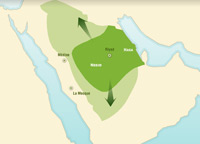
Creation of the Kingdom of Saudi Arabia by Ibn Saud
Video extract
The young Wahhabite prince Ibn Saud managed to reestablish the kingdom of his ancestors and create Saudi Arabia by taking advantage of Britain’s withdrawal from the region.
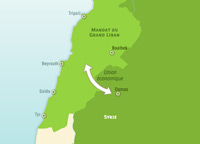
Creation of Great Lebanon
Video extract
Keen to retain the autonomy they had won from the Ottomans, Lebanese nationalists persuaded the Allies at the Congress of Versailles to create a state centred on Mount Lebanon’s Christian community.
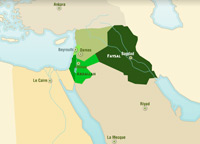
Arab Plans for Unity: “Greater Syria” and the “Fertile Crescent”
Video extract
At the forefront of nationalism in the Middle East between the two wars, the Arab Union declined because of conflicts over its future.
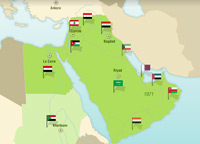
The Middle East from 1945 to the Present Day
Video extract
At the end of the Second World War, the region’s states finally obtained independence. But the creation of the State of Israel and the failure of attempts to create Arab unity left the Middle East deeply divided.
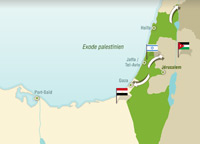
Failure of the Partition Plan
Video extract
Partition of Palestine, proposed by the UN, was immediately rejected by the Palestinians and neighbouring Arab States.
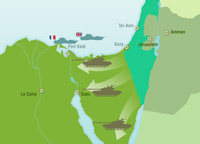
Continuation of the Israeli-Arab Conflict
Video extract
Failure of the Partition Plan for Palestine led to a long series of conflicts between Israel and neighbouring Arab States.
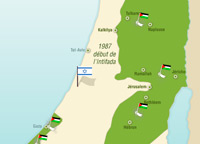
Continuation of the Israeli-Palestinian Conflict
Video extract
After the creation of Israel, Palestinians became increasingly disappointed by the Arab States' ambitions for hegemony and began fighting, using their own weapons, for recognition of their people and their right to their own State.
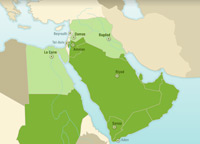
The Arab Cold War
Video extract
Imitating the Cold War situation opposing East and West, the Middle East was divided between progressive and conservative factions until 1973.
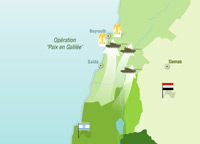
War in the Lebanon 1975-1989
Video extract
Between 1975 and 1992, Lebanon, with a political regime based on a fragile alliance of communities, was the battleground for various factions fighting for their place in Lebanon’s future and for players in regional and international geopolitics.
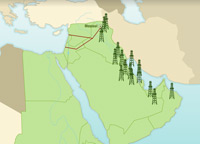
War in Iraq 1980-2003
Video extract
In 1980, following the Iranian Shiite Revolution, Iraq attacked Iran. Although weakened by this war, it invaded the rich Sultanate of Kuwait, in defiance of the international community, and had to face the new world order defined by the United States.
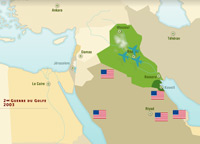
Oil in the Middle East
Video extract
The discovery of oil in the Middle East in the early 20th century greatly strengthened the region’s political and financial bargaining power after 1945.

